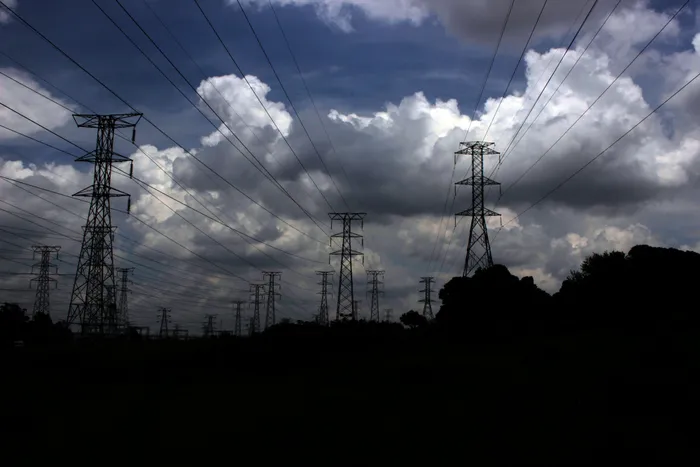Fresh fodder for Eskom, Nersa bullfight as power utility updates revenue requirements

Energy analyst Chris Yelland said that the 32 percent increase required by Eskom is quite high and Nersa does not normally give Eskom what it asks for. Picture: Bhekikhaya Mabaso/ African News Agency (ANA)
Analysts reiterated the call for a thorough review of legislation after Eskom issued a statement on Thursday updating key assumptions in the revenue requirements for its application for a Multi-Year Price Determination (MYPD) 5.
Eskom has proposed a 32.02 percent electricity price hike from April 1, 2023.
In accordance with National Energy Regulator of South Africa (Nersa) MYPD methodology, Eskom is required to provide any updates on changes in conditions and environments that impact various cost elements of the revenue requirements.
Analysts said on Thursday that the ongoing application by Eskom and review by Nersa of the tariff structure should indicate if regulatory changes need be made as Nersa has become the underdog in applications by Eskom that are eventually overturned by the courts.
Energy analyst Chris Yelland said, "The 32 percent increase required by Eskom is quite high and Nersa does not normally give Eskom what it asks for. There is a hostile relationship between the two entities, to the extent that Eskom takes every decision by Nersa to the courts, and eventually wins.
“This is a sign that there is something wrong with the regulatory methodology -something that is not working properly that breeds a toxic relationship between Eskom and Nersa. In the end big and small consumers of electricity suffer from the price uncertainty.”
In its fresh application for the years beginning from April 2023 to 2025, Eskom has made key changes to the application including increases in Eskom primary energy costs, a combination of costs related to the diesel price increase and volume increase, as well as the removal of arrears debt-related costs – in line with the Nersa decision for full year 2023.
“The total revenue as applied for in June 2021 – R335bn (FY 2024) and R365bn (FY 2025) – remains the same,” Eskom said.
Changes were made within the cost items as required with an offset in the return on assets.
Eskom said key changes from the January update included where customers did not contribute to the gap created by non-paying customers and the removal of carbon tax- related costs – due to the announcement by the minister of finance of impending legislative changes to postpone carbon tax liability to beyond full year 2025.
It also included increases in independent power producer (IPP) costs, mainly due to increased emergency IPP procurement, a slight increase in sales volumes and further reduction in average energy availability factor for Eskom power stations of 59 percent.
Eskom said it submitted proposals to Nersa to restructure tariffs during August, which would better reflect the unbundled costs and fixed vs variable costs was included, ensuring that customers were more aligned to the actual costs they imposed on the system.
It said this also addresses the key aspect of certain customers using the electricity system as a battery and back-up, which was critical in making strides to cost reflective revenue levels to not miss the opportunity to make similar step changes in full year 2023 relating to the tariff structures and unbundling.
Eskom said the Supreme Court of Appeal's order that the remaining R59bn of the incorrectly deducted equity be added to the allowable revenue decisions for each year, starting on April 1 with R15bn each in full year (FY) 2024 to FY 2026 and R14bn in FY 2027 allowed that recovery of funds targeted towards the return on assets for the transmission and distribution network businesses.
Eskom said it also allowed for the further migration towards cost reflectivity for the Eskom network businesses. Focus could then be shifted to the generation business in subsequent years.
Nersa has thus far only invited comment on Eskom's application to be allowed amounts of R279bn, R335bn and R365bn for financial years 2022/23, 2023/24 and 2024/25, respectively.
Ruse Moleshe, an energy and infrastructure finance specialist, said, "The proposal in terms of the items applied for does comply. Nersa has to finalise the quantum of the application, but this should not end up in the courts again, it really would not be necessary. The items listed are eligible and it should not be a problem.“
It has, though, taken issue with Eskom's not applying for a ministerial determination for a 3 000MW combined cycle gas power plant at Richards Bay in terms of the Integrated Resource Plan of 2019 (IRP2019), but is instead seeking permission to deviate from the IRP2019.
Nersa said it this week circulated an erratum to a consultation paper published for public comment on August 25 in relation to it providing concurrence to a Ministerial determination for the procurement of 3 000MW of gas-fired electricity, which Eskom has this far not addressed.
BUSINESS REPORT